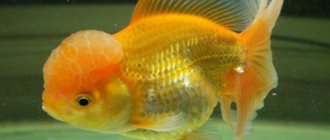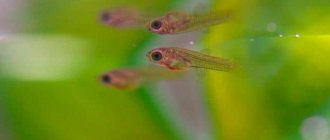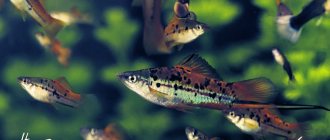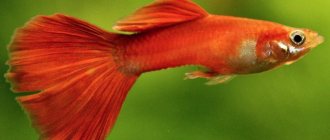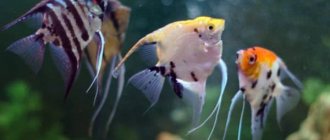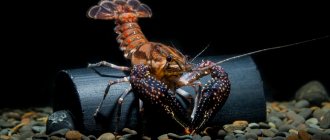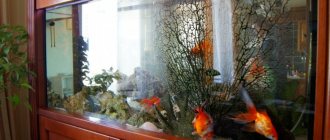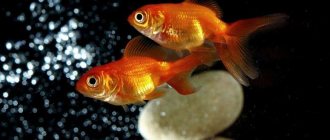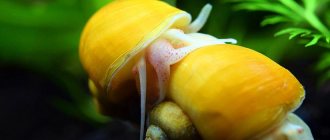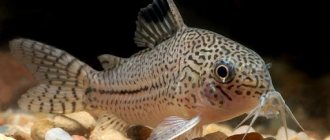In order for a neglected aquarium to be beautiful and the fish to be healthy, it must be regularly looked after. Each aquarist must choose a maintenance schedule independently based on the volume of the jar, the number of residents, the presence or absence of plants, as well as the installed equipment. This article will discuss the general rules for caring and maintaining an aquarium for beginner aquarists.
Attention! Before getting into the water with your hands, turn off the filter, aerator and heater to avoid electric shock.
What to do every day:
- Feed the fish.
- Inspect your pets during feeding or at other times convenient for you. This is how you can notice the beginning of an illness or injury.
- Check the operation of the equipment (filter, aerator, lamps, heater).
Every week you need:
- Wash the internal filter in water drained from the aquarium. If necessary, you can change filter materials or fillers.
- Remove algae from glass.
- Remove rotting plants in a timely manner and weed if necessary.
- Change 30% of the water to fresh water, separated from chlorine, throughout the day.
How to set up an aquarium
The conditions for keeping aquarium fish begin with the purchase of an aquarium and equipment for it. Only after the aquarium is completely ready for use are fish introduced into it.
When setting up an aquarium you need:
- Find him a place in the apartment;
- Install near an outlet, because for the normal functioning of the fish you will have to connect electrical equipment;
- Do not install the fish house near a window so that it is not exposed to direct sunlight;
- Choose a large volume of the reservoir so that it is less often cleaned of fish waste, and if the aquarium is small, then it will have to be cleaned more often so that the fish do not die from being in dirty water;
- In a rectangular tank, fish feel better than in a round one, because the rounded shape distorts objects that are outside the aquarium and the fish may experience stress;
- Boil all decorations in water before installing them in the aquarium;
- Plant algae in a tank, but when they grow, they are thinned out and spoiled ones are removed.
If these requirements are met, then the aquarium fish will be comfortable living in their new home.
Maintain temperature conditions
Aquariums, depending on the inhabitants, are either cold-water or warm-water. Accordingly, you will have to maintain a comfortable water temperature for a particular species. A sharp change of 3-5 degrees will greatly affect the activity and well-being of the inhabitants of the tank. The optimal water temperature for most fish, with the exception of discus, angelfish and pure black fish, is considered to be between +23-24 degrees Celsius.
When hypothermia occurs, fish slow down, become sleepy and apathetic. When overheated, they become unnaturally bright and often sit on surfaces and greedily swallow air.
To maintain the temperature regime, you need to choose a thermometer and special heating for the aquarium.
How to care for an aquarium
When fish have settled in the aquarium, it is imperative to organize proper care for them. Aquarium fish do not require every minute attention like other pets, but once a month you need to pay attention to them and do the following work:
- Feed according to schedule and do not overfeed;
- Observe the behavior of the fish and monitor their number;
- Check how the equipment works;
- Monitor the temperature of the water and its quantity;
- Once a month, change the water in the aquarium to settled water, which has been standing for at least two days, and so that it is at a suitable temperature;
- Once a month, pull out all the soil and decorations and clean them of silt and dirt, dousing them with boiling water before immersing them in the aquarium.
- Thin out algae and remove rotten parts.
The listed points must be observed when keeping any types of aquarium fish. The water in the aquarium should not be cloudy or green. Plaque on the glass of the aquarium must be cleaned with a special device with a scraper every day, and the water must be changed once a month.
Removing fouling on glass
Algae is removed from glass with special scrapers. There are magnetic, plastic, and with a razor blade. When using scrapers with a metal blade, a novice aquarist needs to be careful and careful, as you can scratch the glass or accidentally cut the silicone sealant that holds the glass of the jar together. Scrapers with plastic blades are safer.
In small aquariums, you can use a plastic bank card instead of scrapers. If there is no fouling, then the glass can be cleaned with a clean dishwashing sponge.
Pisces compatibility
When the aquarium is ready to move in, the owners want to add as many fish as possible. But this cannot be done. First, you need to ask the store or read information about what species this or that fish gets along with.
- Compatibility of keeping aquarium fish is an important factor that must be adhered to.
- After all, there are peaceful fish that get along with everyone, and there are predators that can attack peaceful pets and ultimately destroy them.
- Also an important factor is the requirement for keeping different types of fish.
- It is desirable that the fish can be together in a certain temperature regime, water hardness and acidity.
There are also viviparous and egg-laying fish, which also affects their compatibility in the same aquarium.
When these conditions are met in choosing pets, you will not lose them and will be able to enjoy their peaceful coexistence.
Install a filtration system
A properly selected artificial filtration system will help keep water clean longer and prevent the growth of harmful bacteria.
Natural filters such as Siamese algae eaters, otocinclus, ancistrus, shrimp and neretina snails will help maintain a healthy ecosystem and extend the time between cleaning the aquarium. The latter are unpretentious and do an excellent job of cleaning the aquarium from soft waste, algae on the walls, plants and decor. The only disadvantage of snails is their high reproduction rate.
Feeding the fish
The main condition for feeding fish is a balanced diet. But you cannot overfeed them, because they may die. Food is usually poured once a day, but so that there is enough for all the pets to eat.
Underfeeding is also fraught with the death of the inhabitants. Before you start feeding, tap on the glass of the aquarium so that the fish develop a conditioned reflex. At this time they will begin to huddle together and wait for food to appear. It's a funny sight. Feed at the same time, then you will not get confused with feeding.
The main food of fish are:
- Artificial feed;
- Frozen or live bloodworms;
- Plant food;
- Shredded squid and shrimp;
- Special dust for fry.
Change your diet daily. The portion is set as the food is eaten. If you see that there is food left after feeding, it means there is a lot of it. Excess food pollutes the water and rots at the bottom. Fasting days can be arranged for pets once every half month.
Diseases and prevention
Most aquarium fish have strong immunity. The main causes of diseases in aquarium fish are:
- deterioration of water quality;
- infection;
- severe contamination and an increase in the number of pathological bacteria.
If, when examining fish, you see passive fish lying on the bottom, moving strangely, with strange spots or plaque on the body or fins, look for the reason. If necessary, accommodate separately.
What plants to choose for an aquarium
The more diverse the aquatic plants, the better. After all, each of them is also food for fish. Some pets gnaw at algae, and there are some that lay eggs on the leaves.
There are also those who do not pay any attention to algae. But do not forget to thin out the bushes and remove rotten leaves. They also need to be washed under running water to prevent plaque from forming on them.
When changing the water in the aquarium, do not leave elongated algae without water, they are also alive and may die.
Changing water
Caring for fish is closely related to caring for the aquarium itself. Many beginners begin to change the water prematurely, as soon as the water becomes slightly cloudy. The fact is that this is a closed ecosystem, so such haste leads to its destruction, therefore, you will have to “start” your aquarium again. Need I say that fish will not react in the best way to such stress?
A universal recommendation is to drain about a third of the water from the tank, adding fresh water to it, i.e. A complete water change cannot be carried out.
Keeping popular fish species
The variety of aquarium fish is very large, so it can be difficult to decide which species to add to the aquarium. Therefore, you need to know the basic principles in the maintenance and care of those fish that you decide to keep in the tank.
Rooster fish
Keeping aquarium rooster fish is a difficult process, because they love to fight and attack not only other species, but also those just like them. But they will never attack someone who wants to come up and take a breath of air. Sometimes they have to be fenced off with a net in an aquarium so that they allow other pets to live peacefully.
- It is better to cover the aquarium with a lid, because the cockerel can jump out of it.
- The water temperature for maintenance should be 25 degrees.
- The color of the betta depends on the degree of warmth of the water. Fish live for three years.
- Sometimes owners are frightened by the behavior of fish, which can lie on the surface of the water or at the bottom for hours, thinking that they have died.
- But this is such a feature of these fish. These are egg-laying fish and can lay up to 200 eggs in one spawning.
Their diet is no different from the diet of all fish.
Parrot fish
Keeping a parrot aquarium fish is no different from keeping other pets. But sometimes they may reject a rich diet and choose only one food.
- In a suitable aquarium, the length of the fish can reach 30 cm.
- This type of fish is prone to obesity, so you should not overfeed them.
- Parrots become very attached to their owner and can meet him near the walls of the aquarium.
These are egg-laying fish, and they lay their eggs on algae leaves. All the time they protect future offspring and can attack those who want to feast on the eggs.
Knife fish
Keeping a knife fish in an aquarium is not anything special, but you need to choose a tank of three hundred liters so that the fish feels at ease and comfortable in it.
It is advisable to create a natural habitat for these fish in the aquarium, which means that there should be sand or fine gravel at the bottom, and the house should be equipped with snags and places where you can hide.
This is necessary for the knifefish, because it is a nocturnal predator that prefers to hide during the day. The water in the aquarium should be 28 degrees, but it needs to be changed once a week, because there will be a lot of waste from the pet. They are reluctant to eat dry food, but they enjoy finely chopped shrimp and fish.
Comet fish
Keeping an aquarium comet fish or goldfish is fun for owners.
- They are unpretentious in food and will eat any food, but they also pollute water well and quickly, because they do not suffer from appetite.
- If there are other types of fish in the aquarium, they may remain hungry, because it is difficult to catch the comet fish in time for the meal.
- Having a lid on the tank is a must because they love to jump and can often be found on the floor.
- The water temperature must be constant and at least 25 degrees. The light must be bright, otherwise the fish will begin to fade.
The presence of houses and stumps in the aquarium is mandatory, because these fish love to hide and relax.
Choose food
Food for aquarium inhabitants can be of several types:
- dry - available in flakes or granules, you need to select it depending on the structure of the mouth of the underwater inhabitant;
- natural – frozen, gelled and live food
- additives - vitamin supplements help bright fish maintain their colors and grow healthy fins;
How to feed fish in an aquarium correctly, and most importantly, how often?
Adult goldfish, bettas and guppies need to be fed no more than twice a day, and fry - about four. Otherwise, they will not eat all the food; it will sink to the bottom and become an excellent breeding ground for harmful bacteria. Plus, overfed fish become fat, get sick and reproduce worse. Important to know: Choose live food carefully. It is extracted from natural reservoirs and may contain harmful substances and pathogens. Buy from a trusted manufacturer and thoroughly rinse the food before feeding or keep it in the freezer.
Photos of keeping aquarium fish
Create conditions for reproduction
The fish can be viviparous or spawn-bearing. In both cases, it is necessary to create special conditions to protect the female and her offspring from relatives. For viviparous fish, you can set up a separate tank inside or outside the aquarium, and before giving birth, use a net to move the female there.
Egg-laying fish need special soil and algae on the bottom so that they can hide the eggs before the fry hatch.
Install the right lighting
Good lighting in the aquarium affects the growth rate, well-being of the fish and the survival of their offspring. Choose the right light and you will get large, beautiful and well-developed individuals. But natural lighting alone is not enough; you need to buy special equipment.
Today on the aquarium market there are lamps that not only provide light, but also disinfect water using ultraviolet light.
Accessories
Sometimes the glass tank comes complete with cabinets and lids with built-in lighting. This option is useful if there is no space to install the vessel. The cabinet is designed to support the weight of a water container, and there are compartments for storing aquarium accessories. The lid is convenient because it prevents fish from jumping out and relieves the aquarist from the inconvenience associated with installing lighting.
Lifespan
The lifespan of aquarium fish depends on the conditions of care, proper nutrition and species characteristics. They live from 4 to 30 years. The table shows the average duration of popular types:
Large species and those that lay eggs live longer than viviparous and small fish.
